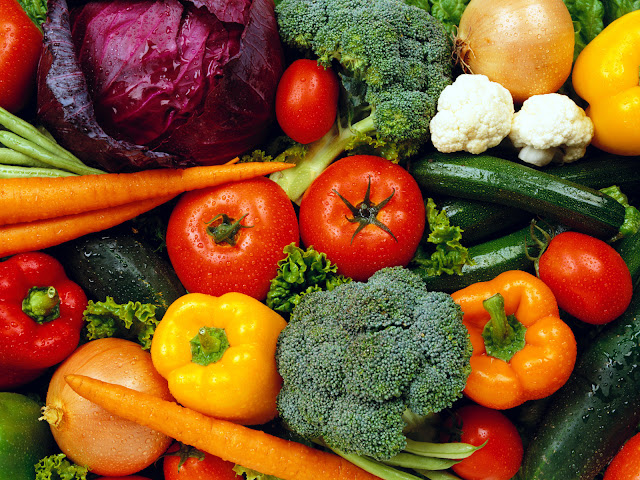The Benefits of Vitamin C
What can vitamin C do for your health?
When someone mentions the word “vitamins,” isn’t your first thought very likely to be vitamin C?
It is, after all, among the most prominent nutritional supplements in the world. And with good reason.
Although it is more popularly known to be effective in combating allergies, preventing infections and improving overall health, there’s actually much more to vitamin C.
01. synthesizing collagen
Vitamin C plays an important role in your body by synthesizing collagen, which is an important structural component of your blood vessels, tendons, ligaments and bone.
It also plays a key role in brain function, assists in turning fats into energy and has even been known to affect mood.
02. Effective antioxidant
Apart from these, vitamin C has also been found to be a highly effective antioxidant. Antioxidants protect your body tissues from the damage caused by free radicals.
If left unchecked, free radical damage may hasten the aging process or lead to the development of cardiovascular diseases and certain types of cancers.
Research has shown that vitamin C, even in small amounts, can protect you from such damage.
Research has shown that vitamin C, even in small amounts, can protect you from such damage.
Numerous studies have probed into vitamin C’s biological benefits, most well-known of which is its association with your body’s immunity.
03. Intensify Immune system
Indeed, vitamin C also plays a big role in the immune system. Studies have suggested that it stimulates the production and function of white blood cells, which protect your body by attacking foreign bacteria and viruses.
Additionally, a study done by the Linus Pauling Institute of Oregon State University cited that an increased intake of vitamin C has been found to reduce the risk of chronic diseases, including cardiovascular disease and cancer.
Several others reinforce this, such as the World Cancer Research Fund’s study, which reviewed how an increased consumption of fresh fruits and vegetables rich in nutrients like vitamin C is associated with a reduced risk in certain types of cancer.
However, even though your body benefits so much from its properties, your body does not have the ability to make its own vitamin C. You must therefore obtain it from other sources, like food.
Major food sources of vitamin C include fruits like oranges, strawberries, lemon, grapefruit and lime, among many others, and vegetables like pepper, broccoli, potato and Brussels sprout.
Vitamin C is one of the safest supplements to take, since it has been found to be both non-toxic and non-immunogenic. There are generally no problems associated with taking vitamin C regularly.
The US Recommended Daily Allowance (RDA) is 90 mg per day for an adult male, and 75 mg per day for an adult female.*
Foods, Vitamin C TOP10 (Source: USDA National Nutrient data base) | |||
Rank | Foods | contain/100g | RDA |
1 | Hot Chili Peppers | 243 mg | 404% |
2 | Moringa oleifera | 220 mg | 367% |
3 | Guavas | 228 mg | 380% |
4 | Bell Peppers | 184 mg | 206% |
5 | Thyme | 160mg | 266% |
6 | Parsley | 133mg | 220% |
7 | Coriander (Dry) | 133 mg | 220% |
8 | Kale | 120 mg | 200% |
9 | Ampalaya | 84mg | 140% |
10 | Broccoli | 81 mg | 135% |
Table 1 : List of Fruits high in Vitamin C
| (Source: USDA National Nutrient data base) Fruits contaning TOP10 | ||||
Rank | Fruits | Quantity/100g | RDA | |
1 | Guavas | 228 mg | 380% | |
2 | Moringa | 220 mg | 367% | |
3 | Kiwi Fruits | 93 mg | 155% | |
4 | Papayas | 62 mg | 103% | |
5 | Pummelos | 61 mg | 102% | |
7 | Oranges | 59 mg | 99% | |
8 | Strawberries | 59 mg | 98% | |
9 | Lemon | 53 mg | 88% | |
6 | Cantaloupe | 37 mg | 61% | |
10 | Tangerines | 27 mg | 44% | |
Table 2 : List of Vegetables high in Vitamin C
Vesitables contaning TOP10 (Source: USDA National Nutrient data base) | |||
Rank | Vegetables | Quantity/100g | RDA |
1 | Hot Chili Peppers | 243 mg | 404% |
2 | Bell Peppers | 184 mg | 206% |
3 | Coriander (Dry) | 133 mg | 220% |
4 | Kale | 120 mg | 200% |
5 | Ampalaya | 84mg | 140% |
6 | Broccoli | 81 mg | 135% |
7 | Banana Peppers | 83 mg | 138% |
8 | Red Peppers | 76 mg | 127% |
9 | Mustard Green | 70 mg | 117% |
10 | Turnip Greens | 60 mg | 100% |
Table 3 : List of Herbs high in Vitamin C
Herbs contaning TOP10 (Source: USDA National Nutrient data base) | ||||
Rank | Herbs | Quantity/100g | RDA | |
1 | Thyme | 160mg | 266% | |
2 | Parsley | 133mg | 220% | |
3 | Citron | 105 mg | 175% | |
4 | Dill | 85mg | 140% | |
5 | Saffron | 81 mg | 135% | |
6 | Comfrey | 80 mg | 135% | |
7 | Rosemary(Dried) | 61 mg | 102% | |
8 | chive | 58mg | 98% | |
9 | Majorana | 51mg | 83% | |
10 | Basil | 50mg | 83% | |





No comments:
Post a Comment